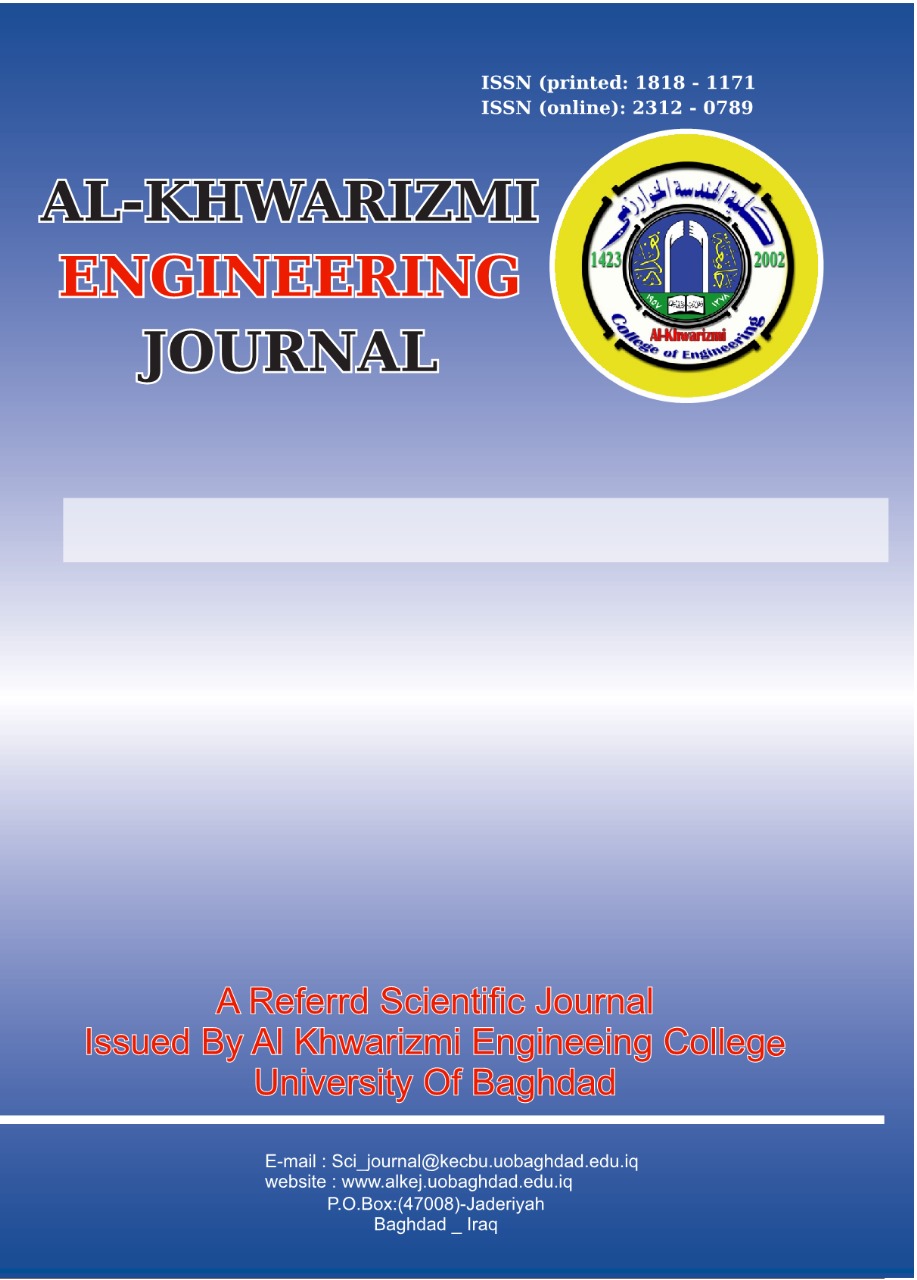An Improved Prosthesis for Through Ankle Joint Amputation
DOI:
https://doi.org/10.22153/kej.2024.10.006Abstract
Prosthetics through the ankle joint are prescribed to patients with a Symes amputation after rehabilitation. Energy can be stored and discharged from the flexible parts, such as the foot, leg and joints of the prostheses. This work improves the prosthetics for amputation through the ankle joint by providing the prosthetics with a movable ankle joint. The most important achievement of the ankle joint is that it performs important walking movements, the most important being planter flexion, dorsiflexion, inversion and eversion. A movable ankle joint was suggested and modelled in the SOLIDWORK program, and it was analysed using the finite element method to evaluate stresses and deformations. This model was used to improve a patient’s gait and reduce exertion. The suggested ankle joint was evaluated through several experimental tests, such as the ground reaction force (GRF) test, 6 min walking test and range of motion test. All the results indicate an improvement in gait parameters and patient adaptation to the suggested ankle-joint prosthetic. The GRF test showed the behaviour of the normal state approaches when using the suggested ankle-joint prosthetic. The results of the GRF test illustrate the percentage difference in the forces for the healthy limb from the suggested movable prosthetic and thetraditional one, with approximate values of 10.96% and 38.88%, respectively. Calculation revealed that the weight of the movable prosthetic with the suggested ankle joint was reduced by 32.69% compared with traditional prosthetic. In addition, a questionnaire was conducted to determine the extent of patient satisfaction when the moving prosthetic was used for a certain period. The questionnaire presented a considerable improvement in patient comfort and other aspects compared with the traditional prosthetic.
Downloads
References
Mohsin J. Jweeg and Jana S. Jaffar, “Vibration Analysis of Prosthesis for the through knee Amputation”, Al-Nahrain University, College of Engineering Journal (NUCEJ) Vol.91 No.1, 2016.
Stefano Alleva, Michele Gabrio Antonelli, Pierluigi Beomonte Zobel and Francesco Durante, “Biomechanical Design and Prototyping of a Powered Ankle-Foot Prosthesis”, Materials Journal, Vol.13, 5806 ,doi:10.3390/ma13245806 , 2020.
Anila Viran, Carol Ewashen, Jane Werunga and Teri Green, “Caring for Patients with Limb Amputation”, Nursing Standard, Vol.30, NO.6 ,2015.
Huong Thi Thu Vu , Dianbiao Dong , Hoang-Long Cao, Tom Verstraten , Dirk Lefeber , Bram Vanderborght and Joost Geeroms , “A Review of Gait Phase Detection Algorithms for Lower Limb Prostheses” , Sensors journal, 20, 3972, doi:10.3390/s20143972, 2020.
Joel Zagoya-López, Luis Adrián Zúñiga-Avilés, Adriana H. Vilchis-González and Juan Carlos Ávila-Vilchis, “Review Foot/Ankle Prostheses Design Approach Based on Scientometric and Patentometric Analyses”, Appl. Sci. Journal, Vol.11, 5591, https://doi.org/10.3390/app11125591, 2021.
Claire L. Brockett and Graham J. Chapman, “Biomechanics of the ankle”, National Library Medicine Journal, Vol.30(3):232-238 , 2016.
Ruben C. Martinez, Roberto L. Avitia, Miguel E. Bravo and Marco A. Reyna, “A Low Cost Design of Powered Ankle-Knee Prosthesis for Lower Limb Amputees - Preliminary Results”, International Conference on Biomedical Electronics and Devices, dio:10.5220/0004914402530258, 2014.
Eric Nickel, Jonathon Sensinger and Andrew Hansen, “Passive prosthetic ankle-foot mechanism for automatic adaptation to sloped surface”, Journal of Rehabilitation & Development, Vol. 51, NO. 5, 2014.
Pierre Cherelle, Victor Grosu, Louis Flynn, Karen Junius, Marta Moltedo, Bram Vanderborght and Dirk Lefeber, “The Ankle Mimicking Prosthetic Foot 3 -Locking Mechanisms, Actuator Design, Control and Experiments with an Amputee”, Journal of Robotics and Autonomous Systems, Vol.91, 2017.
Dianbiao Dong, Wenjie Ge, Shumin Liu, Fan Xia and Yuanxi Sun, “Design and optimization of a powered ankle-foot prosthesis using a geared five-bar spring mechanism”, International Journal of Advanced Robotic Systems, Vol.10, dio: 10.1177/1729881417704545, 2017.
Muslim Muhsin Ali, “Design and Analysis of a Non-Articulated Prosthetic Foot for People of Special Needs”, MSc.Thesis, Nahrain University, 2010.
Carina Price and Christopher Nester, “Foot dimensions and morphology in healthy weight, overweight and obese males Clinical Biomechanics”, Centre for Health Science Research, University of Salford, Salford, England, United Kingdom, 2016.
Downloads
Published
Issue
Section
License
Copyright (c) 2023 Al-Khwarizmi Engineering Journal

This work is licensed under a Creative Commons Attribution 4.0 International License.
Copyright: Open Access authors retain the copyrights of their papers, and all open access articles are distributed under the terms of the Creative Commons Attribution License, which permits unrestricted use, distribution, and reproduction in any medium, provided that the original work is properly cited. The use of general descriptive names, trade names, trademarks, and so forth in this publication, even if not specifically identified, does not imply that these names are not protected by the relevant laws and regulations. While the advice and information in this journal are believed to be true and accurate on the date of its going to press, neither the authors, the editors, nor the publisher can accept any legal responsibility for any errors or omissions that may be made. The publisher makes no warranty, express or implied, with respect to the material contained herein.
















